When Heather’s kids were toddlers, family travel had been relaxing and relatively non-adventurous. But as the kids aged out of the toddler stage (4 and 6 years), she wanted to shake things up, so her family headed to Costa Rica.
They chose Costa Rica for its jungles, biodiversity, and volcanos. She was pulling the kids from school for a week and even at their young ages she wanted to be sure they would get more out of the trip than just a week by the pool.
They didn’t have to work hard in Costa Rica to find opportunities to learn first-hand about animals, birds and insects that the kids had read about in books. They saw capuchin monkeys, black-spined lizards, emus, puffer fish and a large variety of birds.

They visited two volcanoes, Rincon de la Vieja and Santa Monica, and swam in a thermal hot spring heated by one of them; talk about hands-on learning! And while Costa Rica is known for adventure activities that the kids were largely too young for, they found opportunities to have pint-sized adventures that let them push their limits (like a boat ride and snorkeling) and provided a real taste of what this Central Americann country has to offer.
Eileen has been to Costa Rica twice, once with her husband and young teen, and separately on a group tour organized by Costa Rica Family Travel, which focused on authentic activities that families could enjoy with the under-10 set.
You might also like:
• Costa Rica with teens
•My list of 7 Unique FamilyFriendly CR Hotels
• And a Costa Rica packing list!
10 Fantastic Things To Do in Costa Rica With Kids
1. Raise Some Eco-awareness:
Heather: One of the biggest takeaways we wanted them to gain from a visit to Costa Rica was that the planet does not belong to us and we need to leave a soft footprint.
We talked a lot about caring for countries we visit so they can retain their natural resources for themselves, the local wildlife and other visitors.
The kids learned that the ability to enjoy unspoiled natural beauty depends on both local people and visitors being respectful and responsible.
2. Visit An Ethical Animal Preserve
Eileen: There are more than 100 animal “preserves” and “rescue center” in Costa Rica, but they are not all created equal.
During my tour of the country with Costa Rica Family Holidays I learned that only about a half dozen are genuine sanctuaries. These place care for animals that are wounded, put into captivity and then abandoned, or discovered during smuggling arrests. Their goal is to return animals to the wild whenever they can. Less ethical places capture rather than “rescue” the animals you see, and they have no intention of returning them to the wild.
How to Identify the Real Thing:
At genuine preserves they rarely let guests feed or handle the animals. The only animals guests see are the ones that can’t be returned to the wild. And they imitate the animals’ natural environments as much as they can, even if they can’t be rereleased.
They also give the animals they hope to send into the wild away as little human interaction as possible so they don’t get used to people. This means you’ll see them from afar if at all.
2 Model Preserves That Are Great for Kids
Eileen writes: I got to spend a day at Rescate Wildlife Rescue Center, a preserve and rescue center accredited by the Global Federation of Animal Sanctuaries.
When local law enforcement catches animal smugglers at nearby San Jose Airport, they often bring the animals here to be taken care of and sent back into the wild if possible.
Rescate Wildlife takes care of more than 7,500 amimals each year and your visit supports that work.
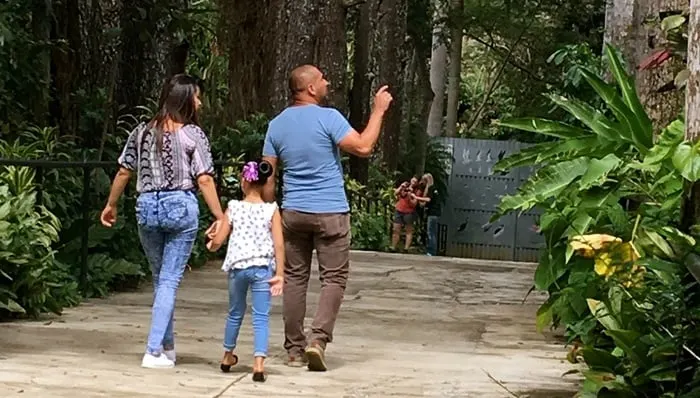
It’s a great place to take younger kids who might not have much luck spotting animals in the wild during your other activities. You’ll be able to see (but not touch) about 125 different kinds of birds, animals and reptiles.
Paths are paved, which makes it stroller friendly and handy for multi-generation vacations.
While habitats are kept as wild as possible we were able to see pretty much all the animals we wanted to including sloths, monkeys, countless colorful birds and so much more.
If you have older kids with you who need a little excitement, the Rescate Wildlife offers a zip-line ride over its canopy. It’s not a super-fast line, giving you the opportunity to try to spot animals down below (especially if you go “superman” style).
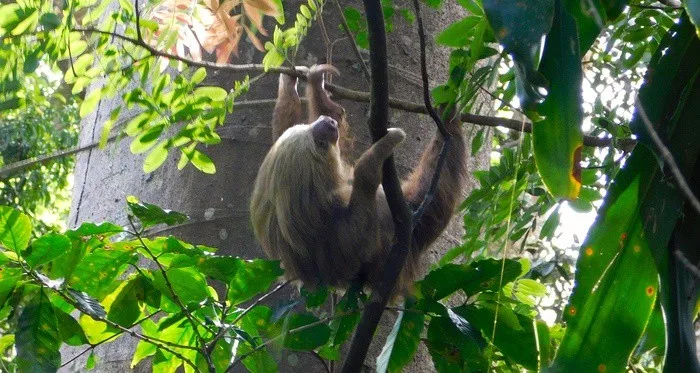
Make sure you watch the short movie that introduces the park’s founder and explains its mission and achievements. And stop at the paleta stand when your walk is over. These fresh fruit ice pops are delicious and made from local fruit.
Another option is Kids Saving the Rain Forest, a wildlife rescue center in Quepos, near Manuel Antonio Park.
Janine Licare and Aislin Livingstone began it as a fundraising project in 1999, when they were both 9YO. Today, volunteers take in injured animals, nurse them back to health and release them in the wild.
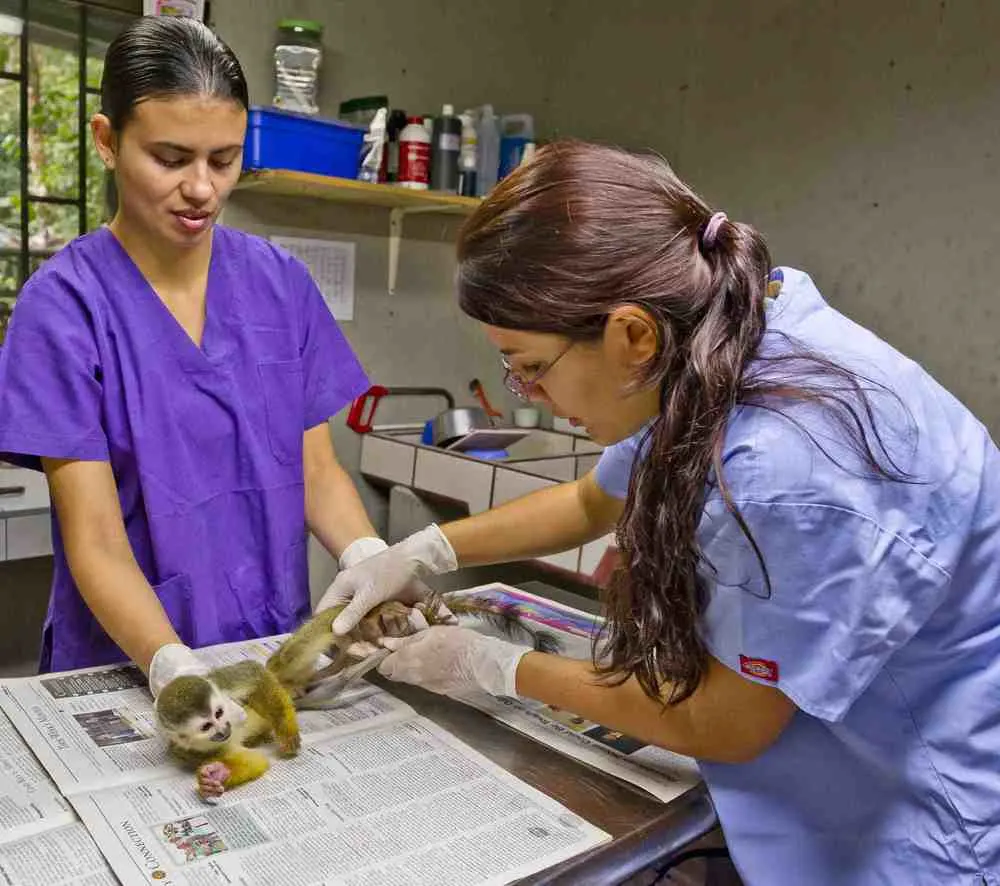
Visitors aren’t allowed to handle these wild animals but on any given day you might get to see sloths, monkeys, birds, marmosets, tamarin monkeys or kinkajou in various stages of rehabilitation. Tours are every morning but Tuesday.
Admission includes a snack and use of the pool.
Tip: Heather prepared her kids by pouring over their subscription to National Geographic Kids for creatures they might see. The magazine also has oodles of information online.
3. Float on a River Safari
Eileen: If you want an easy, kid-friendly way to see quite a lot of wildlife, consider a river safari through the Caño Negro wildlife refuge on the Rio Frio. We took a small riverboat on a cruise that took between 90 minutes and two hours. The boats have two rows of two-seater benches so everyone gets a good view. And the tour guide and boat driver worked together to seek out cool critters.
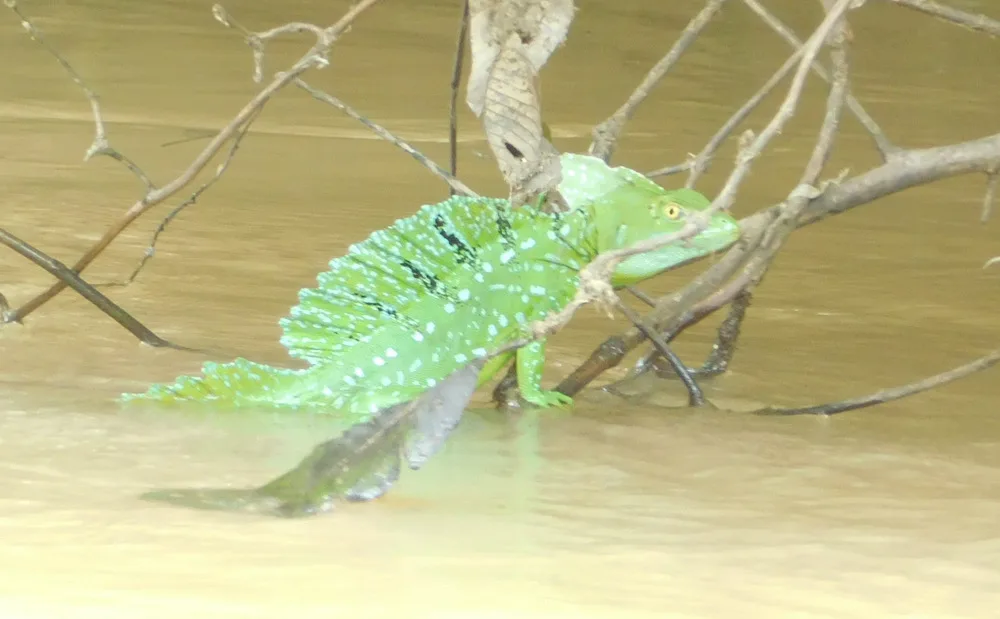
One of the coolest things we saw was an emerald basilisk. These little green critters are called “Jesus” lizards because when it moves it skims the river’s surface in a way that makes it look like its walking on water.
We also caiman, crocodile-like animals that are wider and only three or four-feet long, howler monkeys up in the trees, lots of colorful birds and different kinds of iguanas and a swarm of killer bees around a tree (we saw that from a good distance).
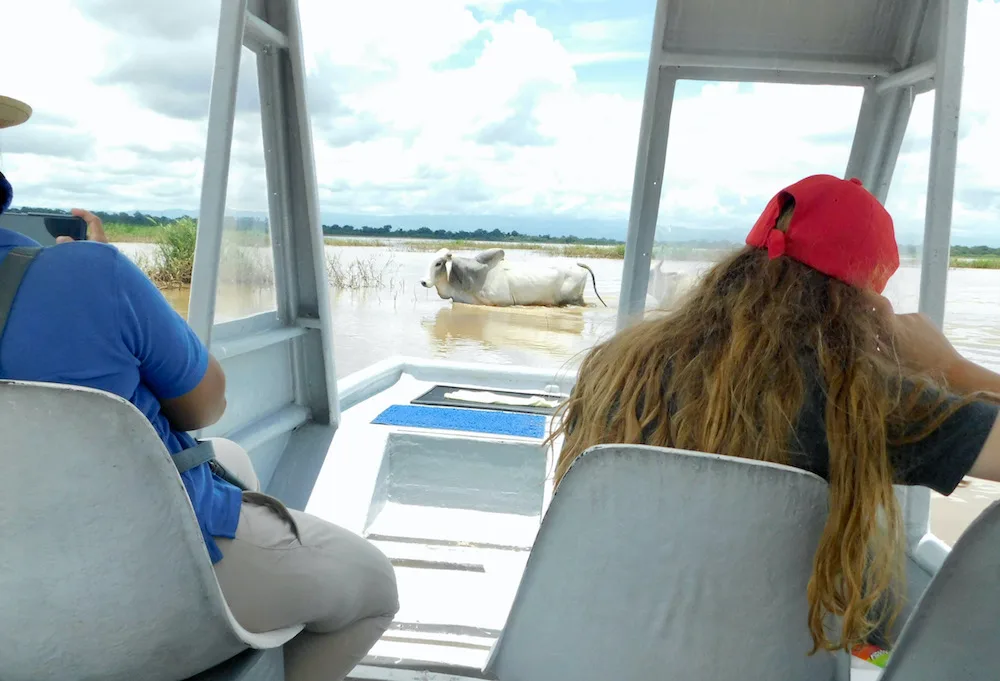
The most unexpected thing we saw was a a herd of cows crossing the river with a cow herder on a flat boat with a long pole for steering (like a gondolier).
2 Tips: The guide mentioned that animal viewing is best during the dry season because more the river is lower, drawing more animals out of the cover of the trees to get a drink.
Also, the boat launch is a little off the beaten path but you can book day trips to do this from La Fortuna or through your tour company if you use one.
4. Push Some Boundaries:
Heather: Part of being a good traveler is understanding that travel takes you out of your comfort zone, and learning to be okay with that.
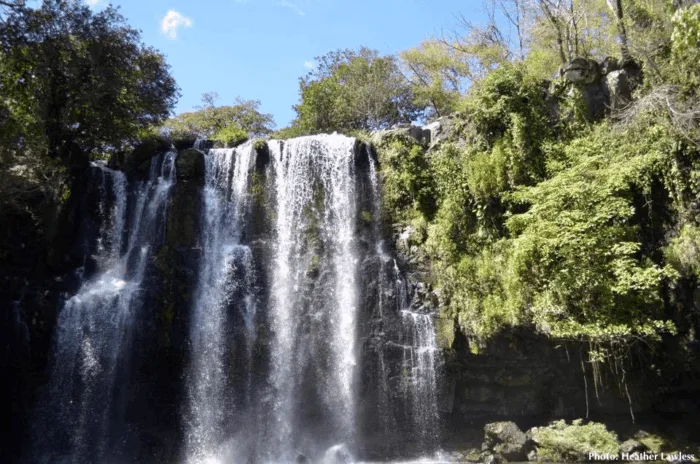
Our 6YO daughter summoned up the courage to zip line over a 900-foot canyon. We all swam in a pool of fish to reach and climb under Llano de Cortez waterfall.
And the kids learned to snorkel in the pool so we could join a sunset snorkel trip along the pacific coast. We hope that remembering how brave they were will pay dividends down the line.
When they got back to school they had a lot to tell their classmates.
5. Take a Bridge Walk
Eileen: If your kids are too young for zip lines or you just don’t have an inner Tarzan to tap into you can enjoy that in-the-tree-tops experience in a milder way at Mistico Hanging Bridges, a beautiful park with perfect views of Arenal volcano.
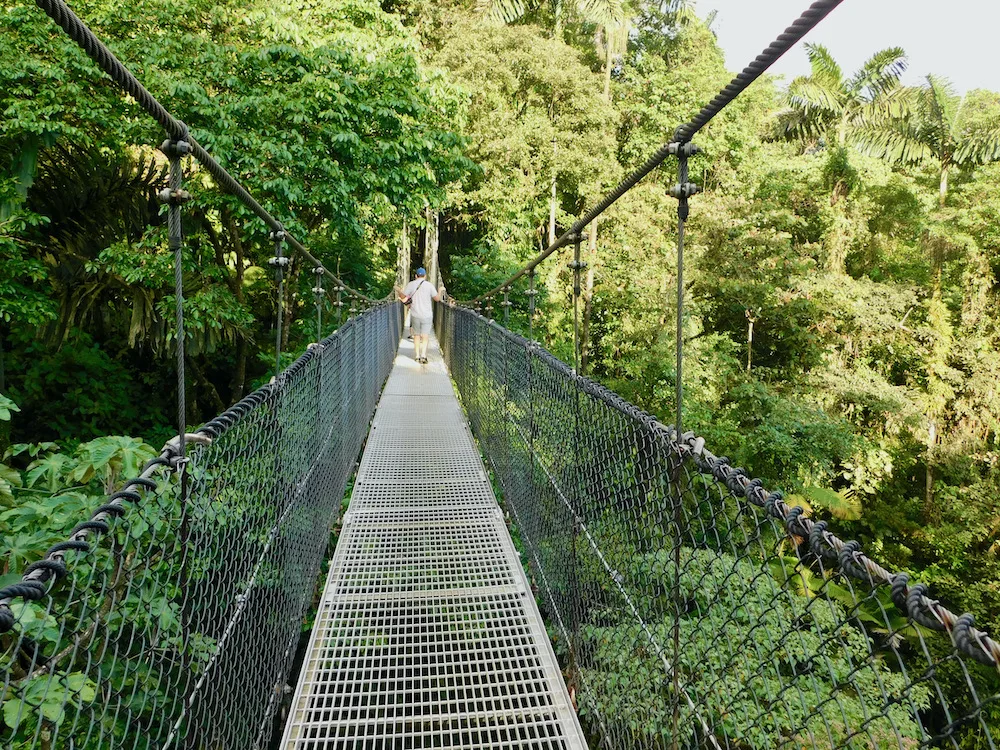
The two-mile walk has 16 bridges (10 swing) and trails that pass through ravines and by one waterfall. There’s an optional side-path down to the waterfall but it’s not a must-do. If you try it be prepared for a steep walk back up.
Keep your eyes open for birds and reptiles. We also saw some coati off the side of the trail. If you’re really lucky you might see some monkeys.
There is a mile-long loop with fixed bridges that is paved and fine for wheel chairs and strollers. But none of the trail is that rough; sport sandals or sneakers are fine here.
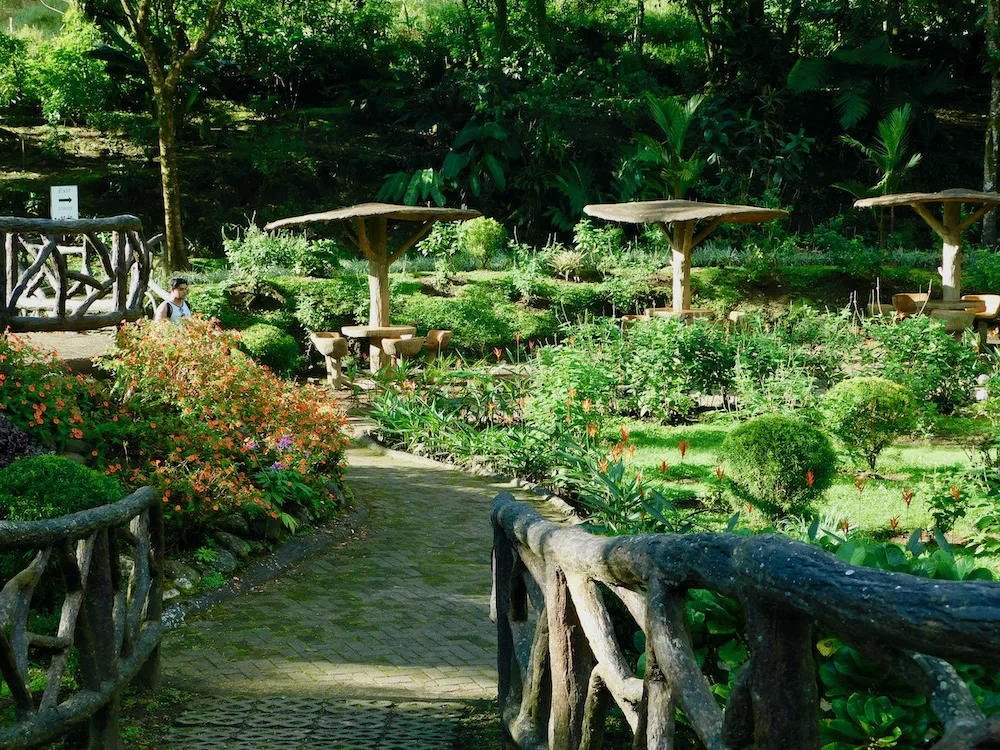
Just beyond the entrance is a hummingbird garden that has a playful magical look to it. It’s ideal if you have younger kids who don’t want to walk the entire main path with your tweens. It’s part of the wheelchair accessible path.
6. Make Human Connections:
Heather: We made a point of visiting the small towns and villages and finding children their age to show them another way of life.
We hoped that connecting with kids from other cultures will help them to be open-minded and more empathetic to differences among their friends back home.
Tip: We used Duolingo to teach the kids some Spanish basics before our trip. Being able to converse with kids in another language–even a little– was exciting and broadening.
7. Have a Hands-on Culture Lesson
Eileen: Sarchi is mountain town, north-west of San Jose, on the way to La Fortuna, with a unique claim to fame. Spanish colonists quickly learned that the best way to transport goods over Costa Rica’s rugged terrain was with heavy wooden ox carts. As some farmers became more prosperous they began painting the oxcarts with distinctive bright colors and bold patterns. Today that painting is a local art form.
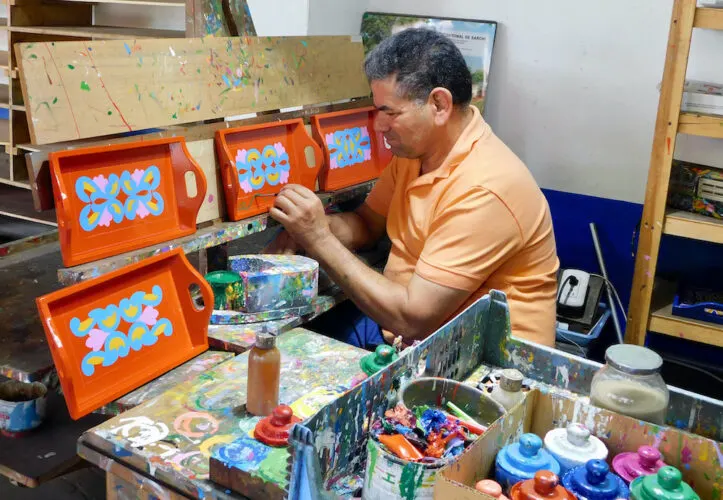
You can visit several workshops in and around Sarchi and see the factories where they used to make the carts by hand – in some places you can see them in various stages. And you can see the artisans at work painting full-size carts as well as various smaller sizes that tourists take home to become planters or coffee-table bases. They also put their bold patterns on umbrellas tea tray, adirondack chairs and other items.
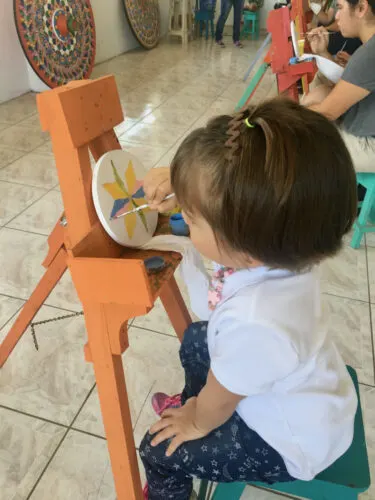
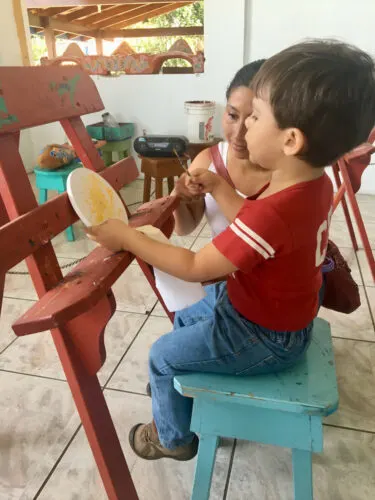
Not surprising, most of the workshops also have stores where you can buy local sarchi items. Watching the artists at work, with all the pots of colors and various brushes is a very kid-friendly activity.
And if you visit Fabrica de Carretas Joaquín Chaverri (Joaquín Chaverri’s cart workshop) you can join a short workshop and paint your own coaster-size wheel to bring home. Results are not guaranteed when kids join the workshops, but the activity still helps them understand and appreciate the process and the artistry they see happening around them.
Planning a trip?
Search and book the best rates for Costa Rica hotels on Trip Advisor.
Check out these family friendly vacation rentals in Costa Rica on VRBO.
Find the best prices on flights and packages on Expedia.
8. Culture Through Food:
Heather: Our children were fairly game about trying the new foods we encountered, including plantains, passion fruit, guava, tropical fruit smoothies (batidas), yucca chips, and of course rice and beans.
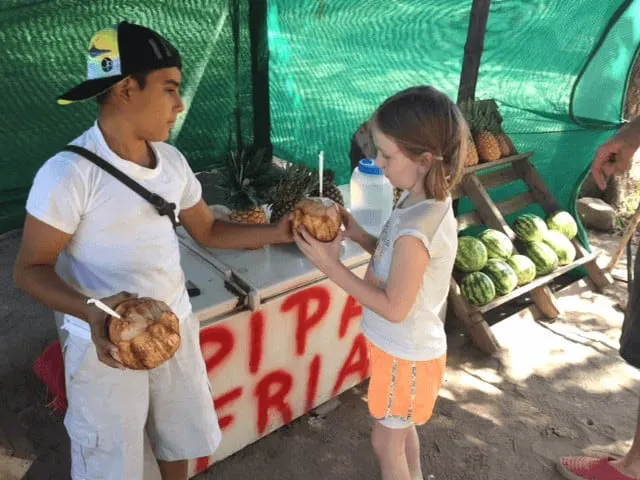
Their favourite was pipa fria – cold coconut water available at roadside stands The seller made a hole in the coconut, stuck a straw inside and we had an instant cold drink! Impressive!
Tip: Our family rule was that you had to try something new every day. You didn’t have to like it, but you had to try and it and talk about it.
9. Do Some Agritourism
Eileen: Ajuela province, north of San Jose, is handy place to head to with kids too young for many other Costa Rica activities. You can view La Paz waterfall and visit a coffee plantation or strawberry farm.
A coffee plantation isn’t an obvious choice with kids but many of the tours are hands on, allowing you to touch and even pick the beans.
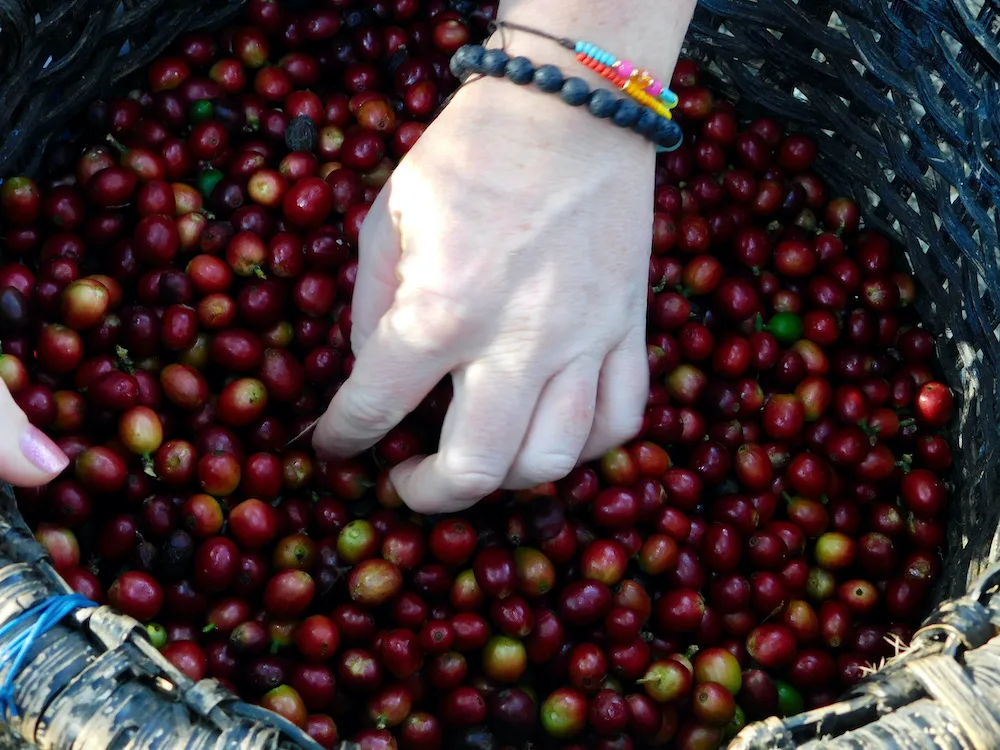
Kids just might be intrigued by the food science that turns red coffee berries into those roasted brown beans mom and dad crave.
While you’re in the area, make sure to stop by Corso Lecheria, a farm where a Corsican family raises Jersey cows for the cheese and ice cream they make onsite.

A quick tour shows you where the family grazes the cows, makes the cheese and grows its own strawberries. It ends with a tasting of the latter two items.
But you can skip the tour, too, and just stop in to buy fresh bread and cheese for a snack later. But don’t, don’t, don’t forget to eat ice cream! You can read all about Corso’s ice cream and cheese in my post about Costa Rican foods kids love.
10. Have Dinner on a Costa Rica Farm
Eileen: Arenal Vida Campesina (Arenal rural life) describes itself as “a self-sufficient, organic cultura learning center. In short, it’s a farm where they have agri-educational programs. I spent an eveninng there, touring the farm with the staff, learning about the vegetables, fruit and herbs they grow and how they use it medicinally and in their kitchen.
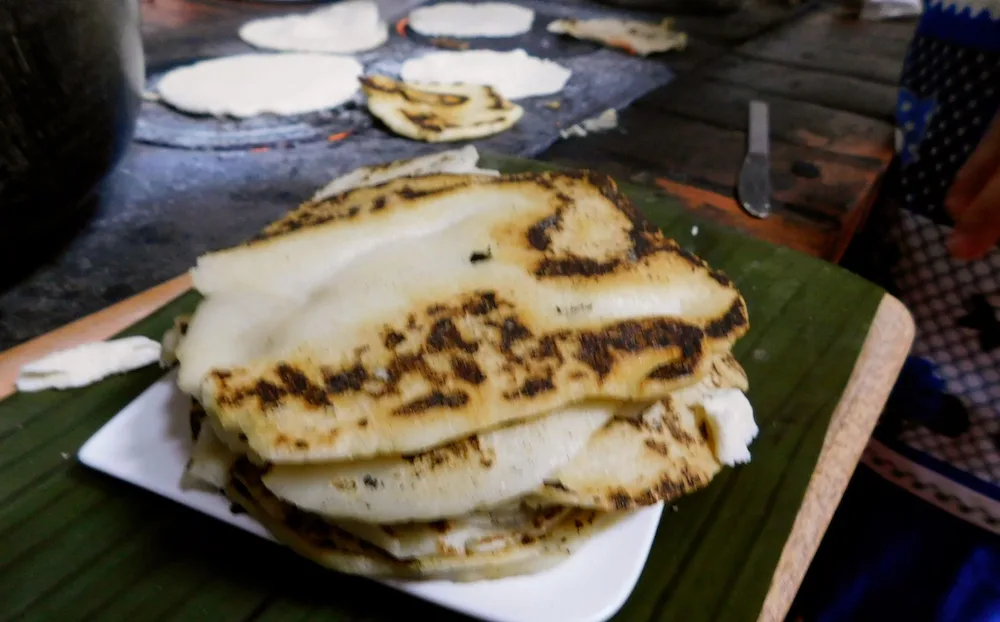
But the best part was after the tour. Our group was divided in two. One group made salda for our dinner and my group made hand-rolled tortillas. It was fun slapping them on to the wood-burning stove to cook and char a bit.
When we were all done we sat down to dinner with shredded beef in a sauce, chicken, black beans, rice, chayote and of course salad and tortillas, with most of the ingredients grown on ste.. It was one of the best meals I had on that trip.
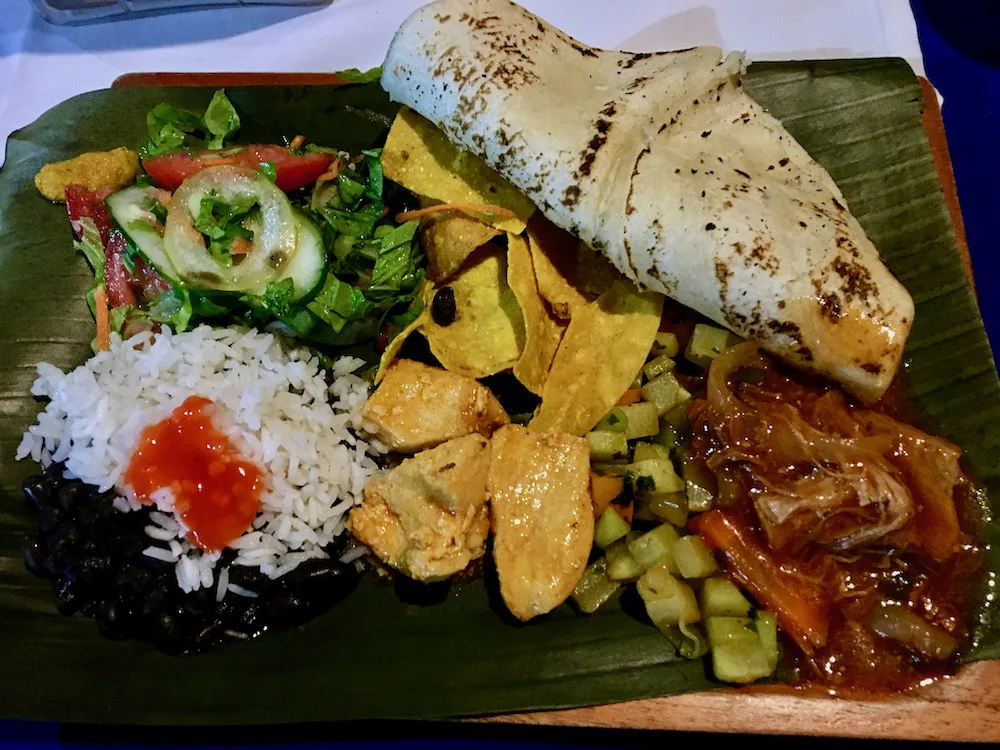
Kids are more likely to try a new food when they’ve ssen where it comes from and have helped to make it. So this is a fantastic way to expose kids about local culture and agriculture through food.
Vist Casa VIda’s webssite and contact them to learn about their programs or ask your tour planner to arrange the dinner for you.
Heather: The trip was just the right amount of adventure, new culture and new foods for our young kids. We’ll probaby go back when they’re older to do even more adventure activities. But this tri gave them plenty to talk about when they got home. Here’s hoping some of the lessons stay with them.
Pin it for later!
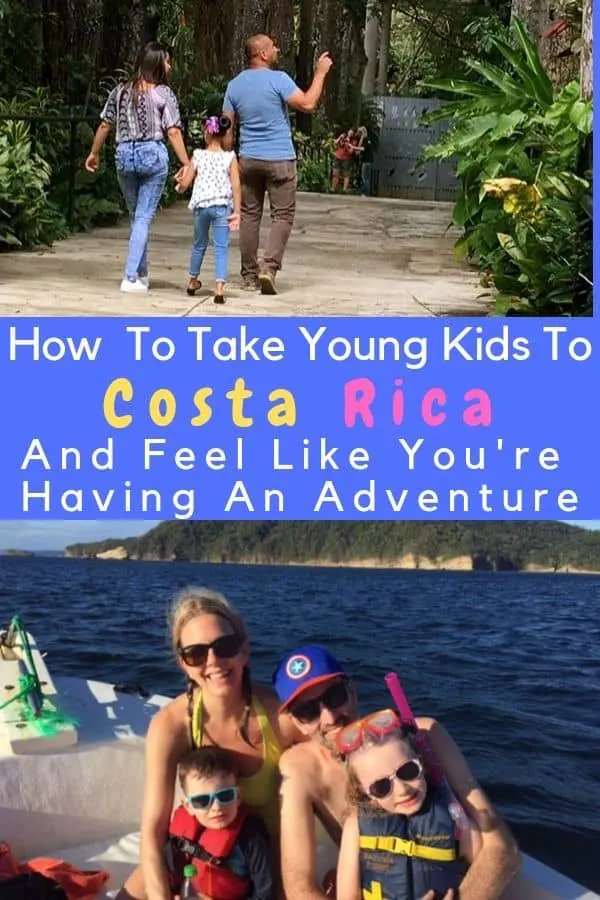
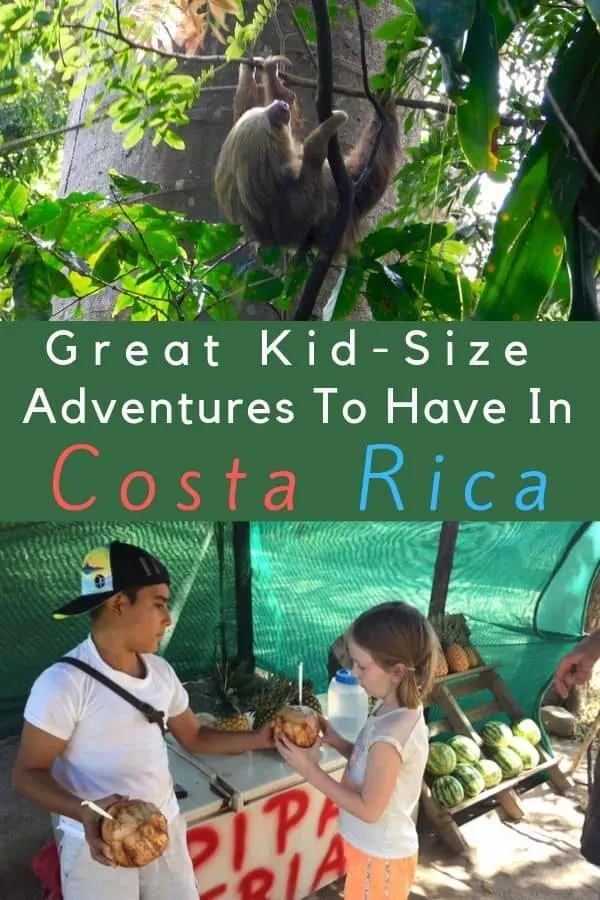
Heather Lawless is a Toronto-based food and travel writer. She’s the author of The Lawless Vegan and the upcoming cookbook, Chickpea Revolution. Follow Heather on Instagram, Twitter and Facebook @thelawlessvegan.
Heather’s family, the waterfall, and the cocnut stand are courtesy of Heather Lawless. All other photos are by FamiliesGo!©

